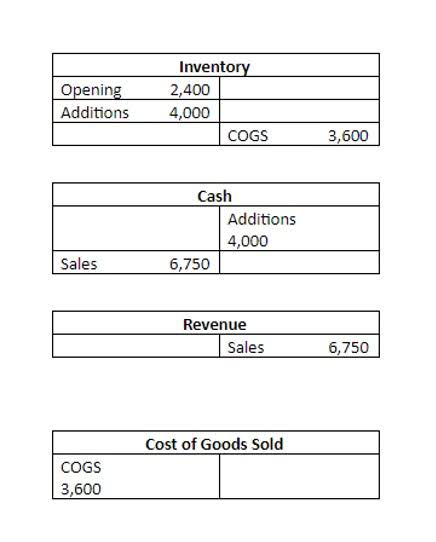
There is a Board of Directors that calls the shots and ensures that the organization is running smoothly. The HOA board is also responsible for preparing regular financial statements, though this job can also fall on the HOA manager. Civil Code Section 5200(a)(3)(d) states that records must follow an accrual or modified accrual basis whenever an HOA member requests copies of the association’s financial records. The bank statement, as you are probably already aware, shows all the transactions that have been carried out on your HOA’s bank account. The HOA bank account is probably where the majority of the cash flow is maintained, and therefore it is important to keep track of the bank transactions and overall balance. A balance sheet is a financial document that shows the amount of money that is present in your accounts.

This understanding aids in making informed financial decisions and safeguarding sustainability. A fiscal year is the period used for calculating annual (yearly) financial statements. While a large number of associations use the calendar year (January-December) as their fiscal year, a business can elect to use any other twelve-month period such as June-May as their fiscal year. Accrual Accounting is an accounting method that measures the performance and position of a company or business entity by recognizing economic events regardless of when cash transactions occur.
Condo Craze & HOA’s” (RADIO SHOW) on 850AM/WFTL & YouTube with Eric Glazer Sundays 11am-12noon.
The main goals of the HOA Aged Delinquency Financial Statement is to determine which homeowners owe money to the HOA or Condo Association, how much they owe and how overdue their payments are. After you adjust the balance per bank to be the true balance, and you also adjust the balance per books to be the same true balance, you have reconciled the bank statement. Most accountants would simply say that you have done the bank reconciliation or the bank rec. CINC’s software has self-contained modules that you can add for maximum scalability as your company grows. CINC’s all-in-one cloud-based system also includes automation, allowing your HOA managers more time to focus on value-added activities. Maintain healthy HOA vendor relationships to keep your management company and the communities you serve at the top of their client list.
Recording of expenses happens when the association pays for them, not when it incurs them. They track income, expenses, assets, and liabilities, providing a clear picture of the HOA’s financial position. There are different types of financial statements, each serving a specific purpose.
Who Should Prepare HOA Accounting Reports?
It monitors the expenditures and income of your account over a specified period (in this case on the month). Homeowner Association fees help to maintain the property of community residents and to improve the overall quality of the surrounding environment. It is important to understand the financial reports of your HOA in order for you to keep track of your contributions and the overall use of HOA money. Understanding the HOA balance sheet is pivotal to managing a homeowners association. The balance sheet is essential for any HOA board member, from providing a snapshot of the association’s financial position to informing strategic decision-making.
- How to Read the HOA Aged Owner Balance Report
Based on the data you have set up to show when the report is run, there are many ways to interpret the information you get. - Typically, financial statements come at the end of every month and at the end of the fiscal year.
- Depending on the agreement, these costs can be collected monthly, quarterly or annually.
- “You’ve got some people who want to see more detail and others who want a high-level summary,” says van Rooyen.
- The Balance Sheet is a financial statement that shows the financial situation of the association, basically showing its net worth.
- Exceptions can exist, of course, and the bylaws will stipulate when compensation is necessary.
Give homeowners 90 days or more to remedy the situation before involving collections. If they respond to notices with defiance or anger, they are not as likely to voluntarily pay. If they are not making any payments at all or have stopped responding, it may be time for collections. Fidelity bonds are insurance policies put in place to protect the HOA from theft and fraud. Homeowners’ associations must carry this coverage according to federal guidelines for homes in the community to be purchased using FHA- or Fannie Mae-backed mortgages. Sending out requests for proposals can give you an accurate picture of vendor costs.
Understanding the Components of the HOA Balance Sheet
In conclusion, understanding your HOA’s monthly financial reports gives you more independence and control over the activities of your HOA. You can carefully follow up on payments and expenditures, suggest areas of improvement, and be more involved in decision making. In the end, you are protecting your homeowner association’s funds and serving your fiduciary responsibilities to the highest level. Through the assets (money in the checking accounts), liabilities (amounts owed, AP) and equity (capital reserve funds) you will be able to see a clear picture of the bank account status.
- Homeowners associations work with all kinds of vendors and service companies.
- Too many payables would indicate that the association is not paying its debts on time or that there is not enough money to settle the balances.
- “On a monthly basis, you don’t want to put in so much information that it becomes very time consuming.”
- This report takes into account the assets, liabilities, and equities to show the overall financial health of your HOA.
- Our experts all agree that there are two answers to the question of who should prepare your financial statements.
- In terms of revenues, the association records them when it earns them, not when it receives them.
While the annual report offers something of a narrative element, including management’s vision for the company, the 10-K report reinforces and expands upon that narrative with more detail. If you’re new to the world of financial statements, this guide can help you read and understand the information contained in them. The homeowners association’s governing documents contain the rules, regulations, and all other contractual terms that members are bound by. If a property is part of an association, membership is automatic when you purchase that property.
To make a great plan, it is important to have all the information possible. Keeping members in the dark only promotes mistrust and working with inadequate or no financial information can lead to dwindling reserves for community upkeep and new projects. Start gathering documents and information on the first day of your current fiscal year. Use your monthly financial statements as the foundation for your upcoming budget. This will also help you generate a thorough business plan and create financial goals for the coming year. Learn everything you need to know here about HOA financial management — from HOA accounting terms to fidelity bonds to the benefits of association audits.

HOA management software makes it possible, along with managing other key functions of an HOA, like issuing CC&R violation reports and violation letters, accepting payments, managing the books, etc. If monthly seems too much, sending an HOA statement quarterly is also a great idea. The point is that it is good to collect the dues in small installments instead of one big amount yearly so more people can find the HOA fee feasible. “You’ve got some people who want to see more detail and others who want a high-level summary,” says van Rooyen. “On a monthly basis, you don’t want to put in so much information that it becomes very time consuming.” Understanding how to read a balance sheet allows you to compare the expenditures that your HOA incurred against the income that it collected.
Because the budget must follow the accrual basis, financial statements should also follow the accrual basis. The accrual basis method means the association records transactions daily, weekly, and monthly it incurs them. For every report, the total balance must agree with the amounts reported as a liability or asset on the association’s Balance Sheet. The Balance Sheet should hoa accounting have Aged Assessments Receivable as an asset with Accounts Payable and Prepaid Assessments as liabilities until the payment of the amounts. HOA accounting is an important aspect of running a homeowners association, but it can be a tedious task. Board members have a responsibility to understand financial interim statements to guide the association’s financial course.
Since the bookkeepers need to make more entries, the cost of maintaining the books increases. The balance sheet should also include a portion for equity, which is the balance of your HOA’s reserve account. An HOA manager is tasked with administering the finances of the association. This process can be error-prone and time-consuming if performed manually, but an integrated banking system could be the solution your company needs to simplify and optimize association accounting. AMS software uses database information to create reports, assess fees, and track violations.

Recent Comments